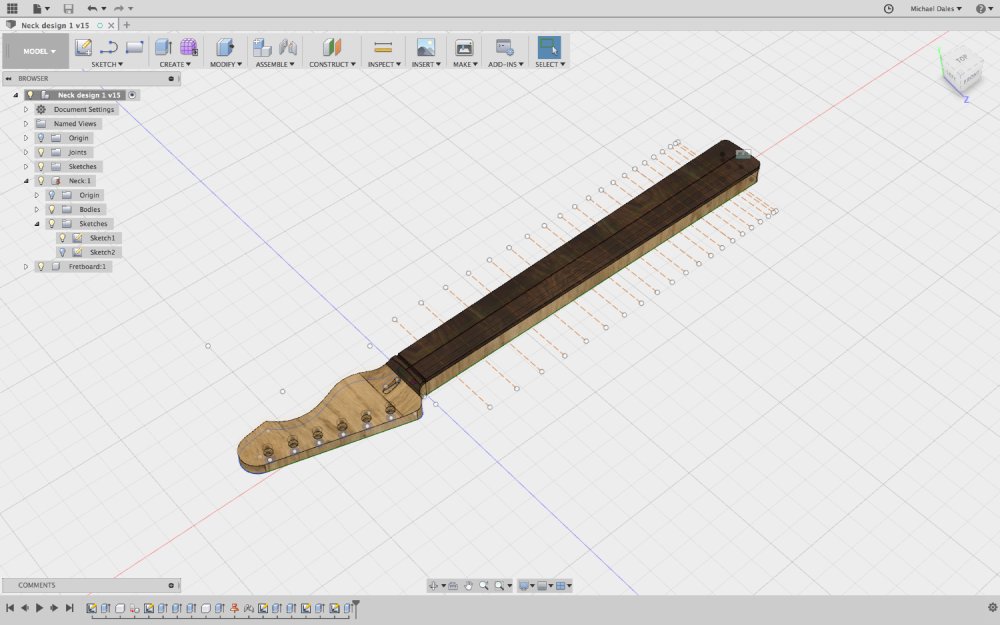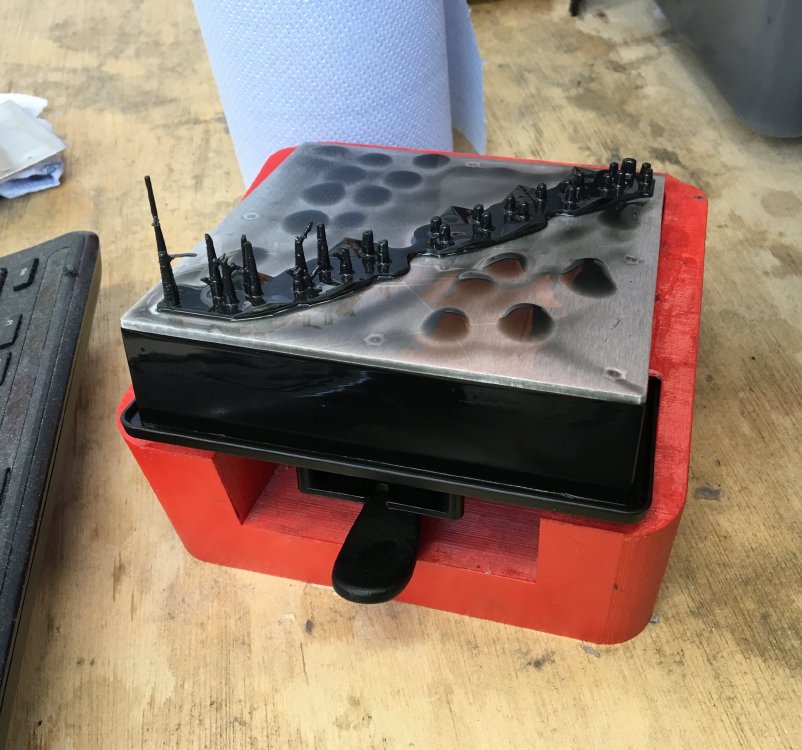A week out of the shop
Published 20 Jan 2018
This week I was kept away from the workshop for the most part, and whilst that’s frustrating on one hand, it’s always necessary in any project to step away for some reason, be it something else needs attention or you want/need to seek motivation. I had a mix of both this week.
For the most part I was doing some (non-guitar related) contract work, and whilst I’d rather be building guitars, it was a nice challenge to help someone ship something quickly, keep my tech skills in shape, and it also importantly helps keep this side of things solvent.
The other thing I did this week was take a day out to head into London to meet some inspirational friends and see some interesting talks. One of the mistakes I tend to make when I get into a project is I get completely dragged into it and forget to look up occasionally and see what else is going on. Thus it was wonderful to reconnect with a couple of smart friends I’d not seen for an age and just chat about ideas without an agenda. As a friend of mine (who was big on trying to combine his love of science and arts in a way I only appreciate these days) who had a similar tendency as me pointed out, you need to “chew cud to make milk”; that is to say, sometimes you need to stop and expose your mind to new things in order to make better things. Since leaving my last full time gig I’ve promised myself I’ll spend more time just engaging with others to help keep my mind exposed to new ideas.
The talks I went to were ran by the Open Source Hardware User Group and themed around music. I found both talks inspiring, as I would like some day to find a way to combine the world of guitars with the world of technology (which is where I’ve spent most of my career). The first was about the Bela Platform, an open hardware platform for doing real time audio processing. The speaker, Giulio Moro, did a fantastic break down of the troubles of doing real time audio processing, and how the Bela hardware and software works to overcome those, so you as a user can just concentrate of making something musical. If I didn’t already have a set of ongoing builds I’d be tempted to buy a Bela board to turn into an effects pedal or build into an amp, but I know that I shouldn’t have too many ongoing projects at once otherwise none will get finished, so maybe later in the year.
If Bela is the sort of thing that interest you for guitar projects, then I can recommend taking a look at it, but there’s also some other options out there that you might be interested in. There’s the OWL, a pre-built open source guitar effects pedal, and the Mod DUO which connects to about everything under the sun, including working for guitars (a hat tip to Tom Armitage for pointing me at the Mod DUO). Both are more expensive than Bela, but are pretty much ready to go in pedal format, so it’s down to you how much hacking you want to do.
The second talk was by Nela Brown of the Female Laptop Orchestra. Nela and colleagues use a mix of digital and traditional instruments to do live concerts with performers taking part from all around the globe, which is very challenging both artistically and technologically. I’ve always been amazed that the Internet hasn’t really disrupted the notion of a band being a bunch of people who live locally more than it has, so it was nice to see a counter example to that.
One of the nice things about train journeys, at least outside of rush hour, is you get an hour or so uninterrupted when you can concentrate on something. I used the trip to London and back to spend some time in Fusion again, this time trying to make a neck design for the next t-style guitar. Before now I’d been tweaking existing design files I found out on the Internet, but I’d like to own everything so my guitars become more my own, and I can start doing properly custom designs. The amp was actually in some way a stepping stone to this: it’s a nice regular shape unlike a guitar, so quite good for learning on. Having done that a neck design was fairly easy to flesh out quickly:

I’ve also continued to struggle with the Form 1 printer in Makespace. I’m not sure what’s wrong with it (the people on the FormLabs forum have some useful suggestions thankfully), but nothing I do right now is working out. My nut design just fails to print most times, and I wondered if it was just my design was atypically small, so I tried a bigger print to test that theory. We needed a new resin filter comb so I tried to print that as it’ll take up quite a large volume, but it too failed at just printing the support structs.

You can see what it was meant to look like here. My current top theory is that not enough people use the printer in Makespace so the resin has been open and sat unused for too long, and so I’m looking to arrange a session with the printer owner to teach me how to properly look after the resin supplies at Makespace, but this is now a blocker, and I think I’ll have to switch from my 3D printed nuts to traditional bone ones for the near future, and hope to do more fun things once I’ve got passed this issue.